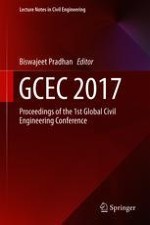2019 | OriginalPaper | Buchkapitel
LEED and Green Building Designs
Aktivieren Sie unsere intelligente Suche, um passende Fachinhalte oder Patente zu finden.
Wählen Sie Textabschnitte aus um mit Künstlicher Intelligenz passenden Patente zu finden. powered by
Markieren Sie Textabschnitte, um KI-gestützt weitere passende Inhalte zu finden. powered by
Abstract
-
The research focuses on two studies in order to reach its aims
-
What is the LEED?
-
What is the LEED certified to?
-
What are the LEED measures?
-
Why certify?
-
Why are the LEED professional credentials changing?
-
What are the eligibility requirements for the LEED professional credentials?
-
How to register a project with the LEED?
-
This part includes the projects submitted for LEED certification, and one is selected for the case studies in Saudi Arabia. Thereafter, the study ends with important conclusions and recommendations.
